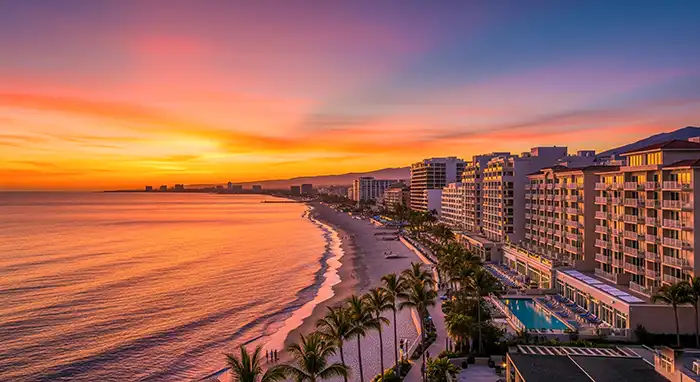Sint Eustatius in One Day: A Journey Through History

- Why Visit Sint Eustatius
- Arrival in Sint Eustatius
- Travel Vlog From This Trip
- A Local Legend of Sint Eustatius
- The Truth Behind the Tale
- Is Sint Eustatius Worth Visiting?
- Best for Divers and History Lovers
- How to Get to Sint Eustatius
- Where to Stay in Sint Eustatius
- Dining with Chickens
- 5 Things to Do in Sint Eustatius
- Where to Eat in Sint Eustatius
- 10 fun facts about Sint Eustatius
Why Visit Sint Eustatius
We explored Sint Eustatius not for its beaches or diving, like many other Caribbean islands, but because of its fascinating history. In the late 1700s, people called this small island “The Golden Rock” thanks to its booming trade industry.
Though it may not have wide sandy shores today, Sint Eustatius offers a captivating past filled with stories of wealth, intrigue, and Caribbean heritage.
Arrival in Sint Eustatius
When we arrived, we felt as if we had stepped back in time. After waiting a while for a taxi—since the island only has one—it became clear that arranging a pickup with your hotel in advance is essential. Luckily, a kind local woman came to our rescue and drove us to our hotel.
Centuries ago, Sint Eustatius thrived as a bustling trade hub. Merchants called it “The Golden Rock” because it ranked among the wealthiest islands in the world, thanks to its lucrative trade.
Travel Vlog From This Trip
A Local Legend of Sint Eustatius
During our visit to Sint Eustatius, locals shared a fascinating story. They said the English queen once gifted the island to the Dutch queen—a grand and generous gesture. People spoke of it as if receiving an entire island as a present was common in their history.
The Truth Behind the Tale
Our guide explained this story is more of a charming legend than a historical fact. In reality, Sint Eustatius was mostly under Dutch control and played a major role in global trade during its peak. The island’s past involves different colonial powers and treaties, but no records support the idea of a royal gift.
Short on time?
Is Sint Eustatius Worth Visiting?
It depends on what you’re into. If you’re not interested in history or diving, Sint Eustatius might not be your top choice. With just one taxi on the island and only a few restaurants, there isn’t much for casual visitors to do.
Best for Divers and History Lovers
If you love diving and exploring the incredible underwater world of the Caribbean, Sint Eustatius is a must. And if Caribbean history excites you, the island’s rich past makes it well worth a visit.
How to Get to Sint Eustatius
You can reach Sint Eustatius by ferry or airplane. The closest airport is in Sint Maarten (SXM), with flights costing between $60–$120 depending on the season. The flight takes about 20–25 minutes.
Another option is the Makana Ferry, which runs daily from Sint Maarten to Statia. Tickets are $65, and the ride takes about 1 hour and 25 minutes. We chose to fly, but we’d consider the ferry on a future trip.
Where to Stay in Sint Eustatius
Sint Eustatius offers a few guesthouses and small hotels. We stayed at the Orange Bay Hotel, located close to the beach, where we enjoyed stunning sunsets. The rooms were simple but clean, with everything needed for a comfortable one-night stay.
The hotel also features the Harbourclub Statia restaurant. We had breakfast there—scrambled eggs, cheese, and toast—and later returned for lunch. The food was delicious, and the highlight was the friendly chickens wandering around, even sitting beside us like cats while we ate.
Dining with Chickens
One of the best parts of our meal was the friendly chickens wandering through the restaurant. They acted like cats, even sitting beside us at the table while we ate.
5 Things to Do in Sint Eustatius
1. Explore the Sint Eustatius Historical Foundation Museum
Located in Oranjestad, the island’s capital, the Historical Foundation Museum offers a glimpse into Statia’s past. Set inside an 18th-century merchant’s home, it displays colonial-era artifacts, pottery, and tools. The exhibits highlight the island’s “Golden Rock” days and its role in global trade, making it a quick but meaningful stop for history lovers.

2. Visit Fort de Windt
We were lucky to stay near Fort de Windt, which made it easy to take a short walk to this historic site on the southern end of Sint Eustatius. The fort is small but rich in history, with its stone wall and a couple of old cannons.
What impressed us most, though, were the refreshing breezes and stunning views. From the fort’s wall, we could see across to St. Kitts and Nevis, creating a peaceful spot to relax and take in the scenery.
3. Hike Quill National Park
The Quill National Park is home to the island’s dormant volcano and surrounding rainforest. Visitors can hike to the crater’s rim for incredible views, spot tropical birds, and enjoy the lush Caribbean scenery. It’s the perfect spot for nature lovers and outdoor explorers.
4. Go Diving in Statia’s Waters
Diving is one of the top reasons to visit Sint Eustatius. The island’s waters feature colorful reefs, lava formations, and even underwater archaeological sites where old shipwrecks are now covered in coral. A highlight is the Blue Bead Hole, a legendary dive spot. With warm waters averaging 80°F year-round, it’s an unforgettable experience for divers.
5. Walk Turtle Beach
Turtle Beach is one of the few beaches on Statia and a nesting spot for sea turtles. Swimming isn’t safe due to strong currents, but it’s perfect for a quiet walk by the Atlantic. The big waves and remote setting make it a scenic place to enjoy nature—just remember there are no shops or facilities nearby.
Where to Eat in Sint Eustatius
Even with our short stay, we found some great food on the island. Dinner at Blue Bead Restaurant came with friendly service and tasty dishes. At Broadwalk Café, we tried the best apple strudel, and at night the beach nearby was magical—boats lit up the water and made for a beautiful evening walk.
10 fun facts about Sint Eustatius
- Its strategic location made it a key Caribbean trading hub.
- The Dutch West India Company settled the island in 1636.
- It was once a major center for the transatlantic slave trade.
- In 1776, Statia was the first foreign port to recognize U.S. independence.
- The British captured the island in 1781 but returned it in 1784.
- The dormant Quill volcano last erupted in the 18th century.
- Historic forts like Fort Oranje date back to the 17th century.
- The 18th century marked its “Golden Age” as a free port.
- Dutch colonial heritage is still visible in its buildings and names.
- During WWII, the U.S. occupied Statia to protect Caribbean trade routes.



















